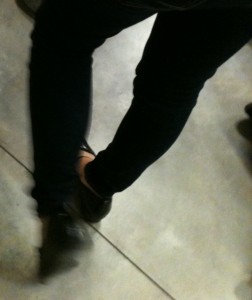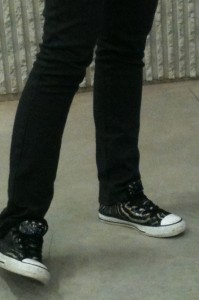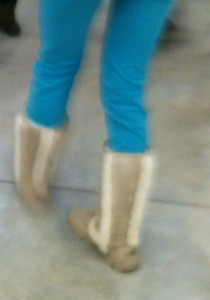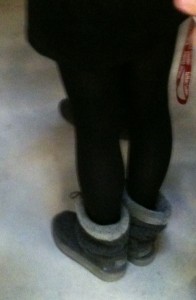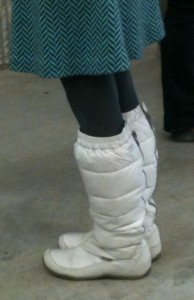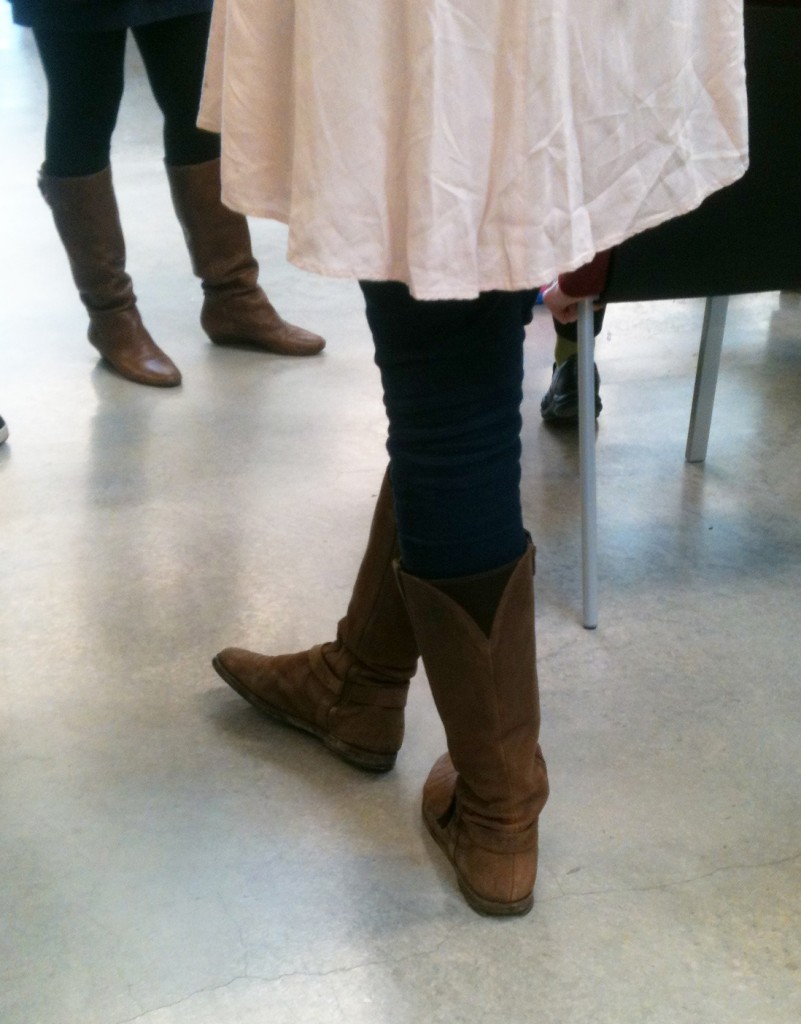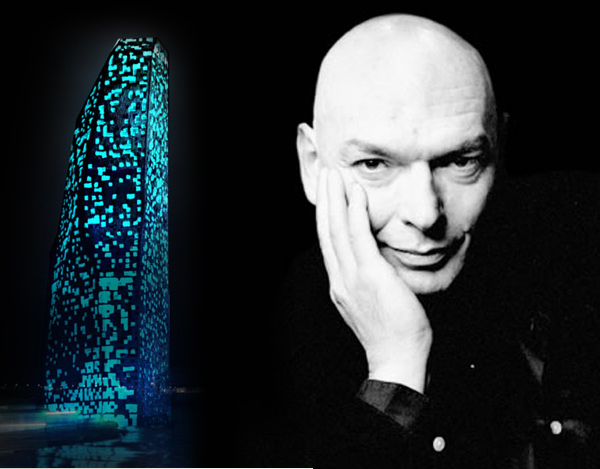Stumbled upon this great inspirational Tumblr page today. Thank you ANXIETIES +/- STRATEGIES.
Blog
-
Volcano Lair for Sale
For Sale: Volcano House
The California classic has midcentury beauty, rich history and it’d be just a two-hour commute
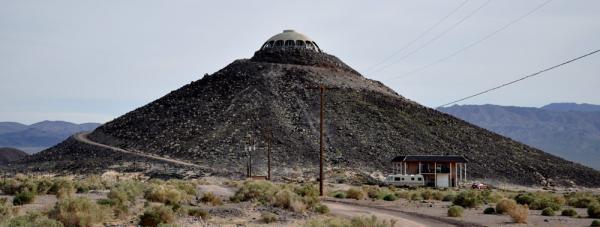
While many a volcano has flared up lately with maddening consequences, the cinder cone that hosts the “Volcano House” in Newberry Springs, Calif., offers nothing but cosmic, barren beauty. The creation of architect Harold J. Bissner Jr., the dome house has been sitting atop a 150-foot conical hill of volcanic fragments since 1968 and is now for sale, at $750,000. The 1,800-square-foot home—guarded by two caretakers whose faces have been sculpted by desertic whim—and its adjoining 60 acres belong to Huell Howser, the host of California’s Gold, the travel show for PBS affiliate KCET that highlights places of interest in California, often along remote paths. Howser became so popular that Matt Groening, creator of The Simpsons, featured a “Howserian” character named Howell Huser in two episodes. Somehow HH also ended up on a bottle of Broguiere’s milk.
Initially the house was commissioned by Vard Wallace, an engineer who built a business selling drafting machines and airplane parts to the likes of Lockheed & Co. during World War II. Wallace, also an inventor who patented the first “skateboard” (a plank with wheels and a short pole for steering), picked the remote location as a tribute to his passions for trout fishing and astronomical pursuits. And perhaps to be close to his personal secretary, who had purchased several acres nearby. During the Wallace years, Lucille Ball was rumored to have been a guest. After Wallace and before Howser, only one owner occupied the home, British developer Richard Baily. Bissner, who’s still in business at age 84, is known for his unique architecture of midcentury modern, post-and-beam and “pole house’’ (where the main vertical structure is comprised of telephone poles) motifs. His oeuvre has spanned England to Shanghai, and he’s designed private residences in Southern California and corporate headquarters and production facilities for Baskin-Robbins and restaurants for Lawry’s and Van de Kamp’s. (For example: The landmark 1967 Van de Kamp’s Windmill that sits on the corner of Huntington Drive and Santa Anita Avenue on Route 66 in Arcadia, Calif.—now occupied by a Denny’s—and is designed with an hexadecagon shell and folded plate roof.)
Bissner was not in the least daunted by the bizarre logistics of the “Cinder Cone” house project when first approached by Wallace, who was inspired by the design of the Edison Co. reception center at San Onofre, Calif. The semicircular Glulam beams supporting the structure were fabricated off site and, once erected, were connected with horizontal one-by-three-feet Douglas fir strips set on edge and toe nailed. Over this beehive-like framework was lathered a solution of elastomeric sealer embedded with perlite to form a well-insulated monolithic waterproof shell. The circular foundation and parabolic structure were anchored in the center by a fireplace that boasts a lot of concrete.
The structure offers two bedrooms and two bathrooms that create a loft-like effect, thanks to partial block walls and open space overhead. The natural gravitational center of the abode is the fireplace carved out of a stone cylinder and surrounded by a sunken conversation pit with Austin Powers-like commands. It’s right next to an equally open fully furnished kitchen that abounds in wood cabinetry.
The architectural tour de force, however, lies in the unencumbered 360 degrees of glass that creates an overhang, which partially shades the interior from the merciless desert sun. This sleek pad, which is about two hours from Las Vegas, is the perfect antidote to modern living (even the ubiquitous golden arches are nowhere to be found). It sits close enough to Interstate 15 (near Barstow) and is so devoid of all trappings that you can land there in a helicopter. The surrounding area offers quirky attractions, though (quite a few of them conveniently featured in a video by the owner, Road Trip With Huell Howser #107—Newberry Springs), including the Buffalo Ranch, Big Al’s Pistachio Ranch, the Ostrich Farm and especially the Bagdad Café, from the eponymous 1987 movie, a cult favorite of Euros.
So to all meditative moguls with a penchant for disciplined and daring architecture, raw helicopter landings, stupefying views and European flicks trivia, here’s your chance.
-
tight pants
This post was verging on creepy so I decided to keep it short and sweet. Basically, there are two types of architecture tight pants. Under Boots and Not Under Boots. Boots require tight pants. It’s so obvious. But just plain tight pants can be worn with sneakers or flats. it’s that simple. They should be black, but we’re open to creative tight pants interpretation if, and only if, you have raging style, are foreign, or are wearing heels.
-
the facts
fact: architecture students love scarves
fact: architecture students love boots
fact: no pants are too tight for students…..ever
fact: glasses MUST be chunky, preferably black, but certainly hip.
in honor, no, in tribute, to these truisms, i begin my very scientific exploration of architecture school fashion in upstate new york.
-
4 more days of crit-talk
As October draws to a close, I’ll devote these last four days to fleshing out the crit-talk lexicon. Please architects, do your damnest to use at least one of these words today. Otherwise, how will we know you’re smart? [all of these were heard on campus].
didactic
parallax
articulation
mimetic
non-mimetic
fragmentation
disjunction
juxtaposition
climax
developer-architecture (ouch!)
-
November = Architecture School Fashion Month
Since I’m not feeling very “rockstar-architect” of late, I’ve decided to take the pressure off and devote November to architectural analysis I care deeply about: scarves and hunter boots. November is Architecture school fashion month: boots, scarves, and tight pants. Summer was short-shorts and boots. Fall has been tight pants and boots. Scarves, scarves, and more scarves. One picture a day from Rem’s spaceship at Cornell………stay tuned.
-
Multiply-Ramifying. Well, lah-dee-dah.
So, apparently this word (phrase?) is common in academic texts, but after reading several different sources, I still have no idea how to use it in context. Por exemplo:
- As Ronald Martin has shown, further, the principle was the basis of a multiply-ramifying discourse on force……
- These multiply-ramifying glaze arteries are formed when free-floating wood ash ……..
- The basic strategy is utterly simple: reverse the causal sequences (often netlike and multiply-ramifying) that have brought a troubling situation . . . .
Utterly simple. I think it’s code for: “I’m smarter than you. We both know this. You’ll forget to even look this word up later. No matter, it doesn’t exist in the dictionary, you fool!”
Multiply: Increase. Ramifying: Branch. So, increase branching? Can’t wait till I have the opportunity to slip the ole ‘increase branching’ discourse into my review. Someone will owe me a dollar when I get that guy in the mix! Kind of like at my wedding when I bet our buddy he couldn’t work “Dalai Lama” and “Sherpa” into the Best Man speech. He did it. Seemlessly. I’m still amazed.


